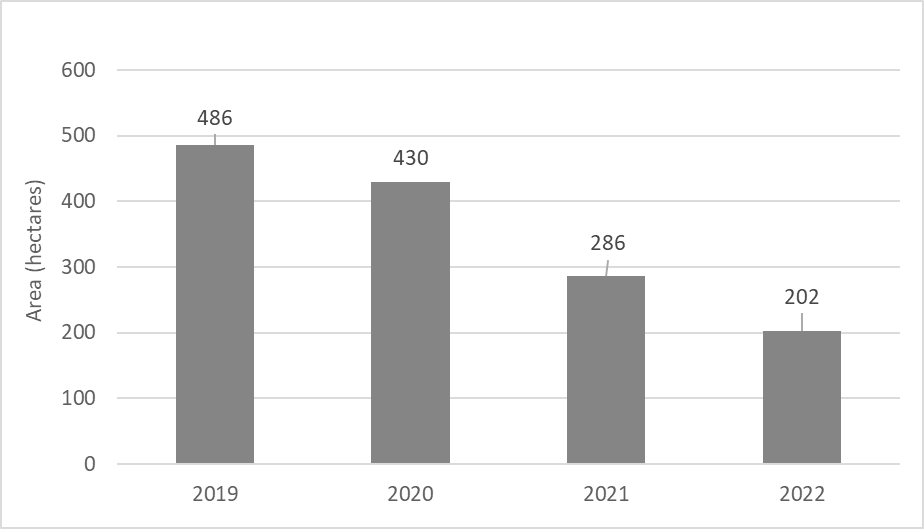A review of SA planting records on the Vinehealth Register shows 1,400 hectares of plantings we can classify as current non-bearing vines; these being either new vines planted between 2019 and 2022, or recently top-worked vines.
Annual plantings declined year-on-year over this four-year period, with the largest annual decrease compared to the previous year noted in 2021 (Figure 1).
Eighty percent of the state’s non-bearing area is red varieties, accounting for 1,000 hectares (Figure 2).
The proportion of plantings of white varieties compared to red varieties increased year-on-year between 2020 to 2022. Whites comprised just 12% of planted area in 2020 and increased to 38% of plantings in 2022, indicative of the changing market landscape (Figure 3).
The highest total non-bearing areas currently on the Vinehealth Register are from the Riverland, followed by the Barossa Valley, McLaren Vale and Clare Valley (Figure 4).
“With the information Registered Persons provide to the Vinehealth Register each year, we’re in a privileged position to be able to report statistics from the Register which may be useful to the industry for planning and management purposes,” said Suzanne McLoughlin, Vinehealth Australia Acting CEO.
“Examining non-bearing vines is one such area to explore, given the current industry oversupply situation, particularly in red varieties, and subsequent interest in the area of vineyard to come online in the short-medium term.”
For more information about the Vinehealth Register click here.



